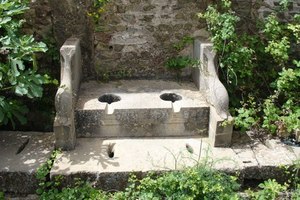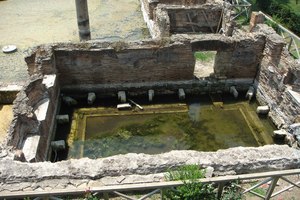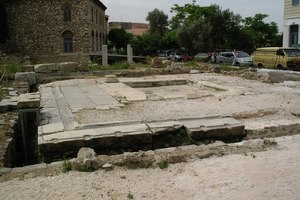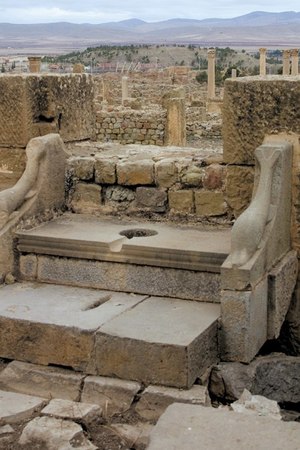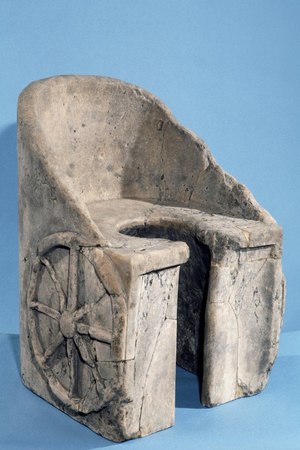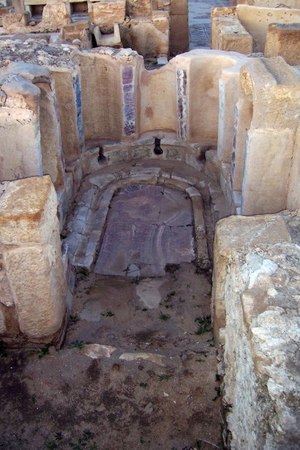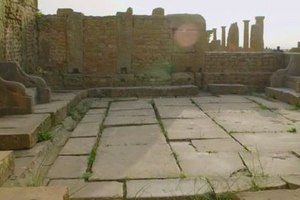Latrina
Latrine (Latin: latrina - toilet, restroom) - a public toilet in Ancient Rome. There is also a similar term forica (forica). The surviving written sources say that forica is a multi-seat public toilet, and latrina is a private one, however, there are no clear distinctions between these two terms. State public toilets were often arranged in places where crowds gathered: in baths, palaestras, theaters. Visiting such establishments was usually cheap or free - emperors in Rome striving for popularity among the plebs or wealthy townspeople in other cities of the Empire paid for their work from their treasury.
However, not all city baths had public toilets. In Ostia, for example, out of fourteen baths, only six had toilets. Often there were not enough toilets for the expected flow of visitors: in the rather large baths of Baiae, the restroom was designed for 6-8 visitors. But in Pompeii, foricae were at all five baths, as well as at the palaestra, the Great Theater (in the era of Augustus there were no toilets at theaters in Rome and Ostia at all), at the Civil Forum.
Starting from the middle of the 1st century AD, many more latrines were built, designed for many people. For example, the restroom at the palaestra in Hellenistic Salamis (Salamis) in Cyprus could accommodate up to 44 people.
In total, more than 140 latrines were found in Rome during the late Empire, in Ostia - more than 60, and possibly more than 80. They were not always located near sewers and had an instant drain into the sewerage, much more restrooms were not equipped with a drain at all.
Public toilets in Ostia were very modestly decorated, apparently, for the developer or owner, beauty was not so important. However, latrines at colleges or other male "clubs of interest" - whether business, social, or production - always look much better. Cold stone or marble (in the early stages of the establishment of forica standards, and later in the areas of the poor, such as the Roman Subura, could be wooden) benches did not suit everyone. It is assumed that many rich people sent their slaves to the public toilet a little in advance so that they could warm up the spot for the convenience of the owner.
Usually, latrines and foricae were quite open - there were no dividers between the seating areas. The distance between the seats could be quite small - about 30 cm, while the ancient Romans did not experience any inconvenience due to such proximity. The same distance was between people on benches in theaters and amphitheaters, from which it follows that it was not considered a violation of personal space. Probably, ancient Roman clothing, in this case, advantageously different from modern, played a protective role: with the folds of a tunic or toga, a toilet visitor kind of fenced himself off from neighbors.
There were practically no public toilets with separate cubicles or even just partitions. As an exception, it is worth noting the toilet in the baths in the House of Laberii - a large luxury villa in Utina, in the Roman province of Proconsular Africa (now Uthina in Tunisia).
At the same time, in the ancient Roman city of Thamugadi (Timgad), located in North Africa (in modern Algeria), we see in the public toilet in the forum quite individual seats (restored and reconstructed).
Thus, it is worth noting the fairly high sanitary and hygienic standards of the Roman state, where the development of infrastructure allowed to deal with, amongother things, the arrangement of such an important thing as toilets.
Related topics
Architecture in Ancient Rome, Theater, Baths, Thermopolium

 Gallery
Gallery






